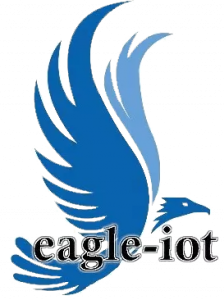Fleet Management Challenges 2024: Can Technology Bridge the Gap?
The year 2024 presents a unique set of challenges for fleet managers. A confluence of economic and technological factors, from rising fuel costs and driver shortages to the ongoing transition to electric vehicles (EVs), is creating a complex landscape that demands innovative solutions. This article explores the key hurdles facing fleet managers and investigates the technological advancements that can empower them to navigate these obstacles and achieve their operational goals.
The Challenge Course: A Multifaceted Landscape
Cost Pressures:
Inflationary pressures and relentless fuel price increases are squeezing fleet budgets by as much as 10% according to the Teletrac Navman 2024 Telematics Survey. This strain on profitability is compounded by ongoing supply chain disruptions. Parts shortages can lead to unexpected delays in repairs and maintenance, further impacting operational costs.

Driver Shortages:
The industry is grappling with a well-documented lack of qualified drivers. The American Trucking Associations (ATA) estimates a shortage of over 80,000 drivers in the United States alone. This shortage can lead to disruptions in service, delays in deliveries, and increased strain on existing drivers. Meeting customer expectations becomes an even greater challenge with a diminished workforce. Many fleets are increasing driver wages and offering signing bonuses to attract new drivers.

Meeting Customer Demands:
Saudi Arabia’s e-commerce sector is experiencing explosive growth, and customer expectations for fast, reliable deliveries are mirroring this trend. Fleet managers are tasked with optimizing routes across vast distances, improving efficiency in a geographically dispersed country, and ensuring on-time arrivals, all while contending with driver shortages and rising costs. This delicate balancing act necessitates innovative strategies to maintain customer satisfaction. Some fleets are investing in route optimization software such as Eagle-IoT, specifically designed for the unique road networks and traffic patterns of Saudi Arabia. Additionally, some logistics companies are exploring alternative delivery models, such as urban consolidation centers, to improve efficiency in densely populated areas.
Electrification Shift:
The transition to EVs offers environmental benefits and potentially lower fuel costs in the long run. However, concerns regarding charging infrastructure limitations are particularly acute in Saudi Arabia, as the current charging network is limited. Additionally, higher upfront costs for EVs compared to traditional gasoline-powered vehicles, and limited availability of certain EV models due to supply chain issues, create a complex decision-making process for fleet managers.


Balancing Efficiency and Sustainability:
Fleet managers are under pressure to deliver faster and cheaper, but also to minimize their environmental impact. This seemingly contradictory directive requires careful planning, route optimization, and the adoption of technologies that can improve fuel efficiency and promote safe driving practices. Telematics systems can be used to track driver behavior and identify areas for improvement. For example, telematics data can be used to identify drivers who are speeding or idling excessively. This information can then be used to coach drivers on more fuel-efficient driving techniques.
Equipping for Success: Technology as the Fleet Manager’s Ally
Fortunately, a suite of powerful technologies exists to address these challenges and empower fleet managers to achieve their goals. Let’s explore some of the most impactful solutions:

Fleet Management Software:
Platforms like Eagle-IoT provide real-time visibility into every aspect of fleet operations. Fleet managers can gain valuable insights into fuel consumption, driver behavior, vehicle location, and maintenance schedules. This data becomes the foundation for identifying areas for improvement, reducing costs, and optimizing routes.

Telematics:
Telematics systems leverage GPS and sensors to track vehicle location, speed, and other data points. AI-powered telematics analyze this data to identify risky driver behaviors and provide coaching opportunities. This proactive approach can lead to significant reductions in accidents, resulting in lower insurance costs and a safer fleet. Video telematics with audible alerts take driver coaching a step further by providing real-time feedback, further enhancing safety measures.
Route Optimization Software:
By analyzing traffic patterns and real-time conditions, Eagle-IoT helps plan the most efficient routes for drivers. This translates to time savings, reduced fuel consumption, and ultimately, increased productivity.

Asset Tracking:
For fleets that manage non-powered equipment like trailers or generators, asset tracking solutions are a game-changer. These solutions pinpoint the location of these assets, ensuring they are utilized efficiently and eliminating wasted time searching for misplaced equipment.
From Challenges to Triumph: How Eagle-IoT Empowers Fleet Success
Technology empowers fleet managers to overcome the challenges of 2024 and achieve their goals in several ways. Here’s a look at how Eagle-loT’s various solutions can address these hurdles:

Reduced Costs
Fuel Efficiency: Route optimization software such as Eagle-IoT considers real-time traffic data and historical patterns,which be used to plan the most efficient routes for drivers. This reduces unnecessary idling and miles driven, leading to significant fuel savings. Predictive maintenance solutions that leverage OBD data and AI-powered analytics can help predict equipment failures before they occur. This enables proactive maintenance, preventing breakdowns and costly repairs, and extending the lifespan of vehicles.
Increased Productivity
Real-Time Traffic Updates: Live traffic data feeds can provide drivers with real-time updates on congestion and road closures. This allows them to adjust their routes dynamically, minimizing delays and ensuring on-time deliveries.
Improved Asset Tracking: Asset tracking solutions use GPS and sensor technology to pinpoint the location of non-powered equipment like trailers or generators in real-time. This eliminates wasted time searching for misplaced equipment and ensures they are utilized efficiently.
Improved Safety
AI-Powered Driver Coaching: AI-powered analytics can analyze driver behavior data, identifying patterns like harsh braking, speeding, or improper lane changes. This data can be used to provide targeted driver coaching, promoting safe driving practices and reducing the risk of accidents.
Video Telematics with Audible Alerts: Video telematics solutions equipped with in-cabin cameras can detect distracted driving behavior and trigger audible alerts to correct drivers in real-time. This immediate feedback fosters a culture of safety within the fleet.
Meeting Customer Demands:
Faster Deliveries: Optimizing routes, reducing delays through real-time traffic updates, and ensuring on-time arrivals with improved driver behavior can lead to faster deliveries.
Real-Time Tracking and Customer Communication: Real-time tracking information can be shared with customers, allowing them to track the progress of their deliveries and stay informed, enhancing customer satisfaction and trust.


Data-Driven Decision Making:
Comprehensive Data Analytics: Cloud-based platforms can collect and analyze a wealth of data from vehicles, drivers, and routes. This data provides valuable insights into fleet performance, fuel consumption, driver behavior, and asset utilization. Fleet managers can use these insights to make informed decisions about everything from route planning and driver training to vehicle purchases and maintenance schedules.
Eagle-IoT offers a comprehensive fleet management solution to address the challenges outlined above. It’s important to research and compare different options to find a solution that best meets the specific needs of your fleet.
By implementing these technological solutions, fleet managers can navigate the complexities of 2024 and achieve greater efficiency, improved safety, cost savings, and ultimately, a competitive edge in the ever-evolving logistics landscape.


